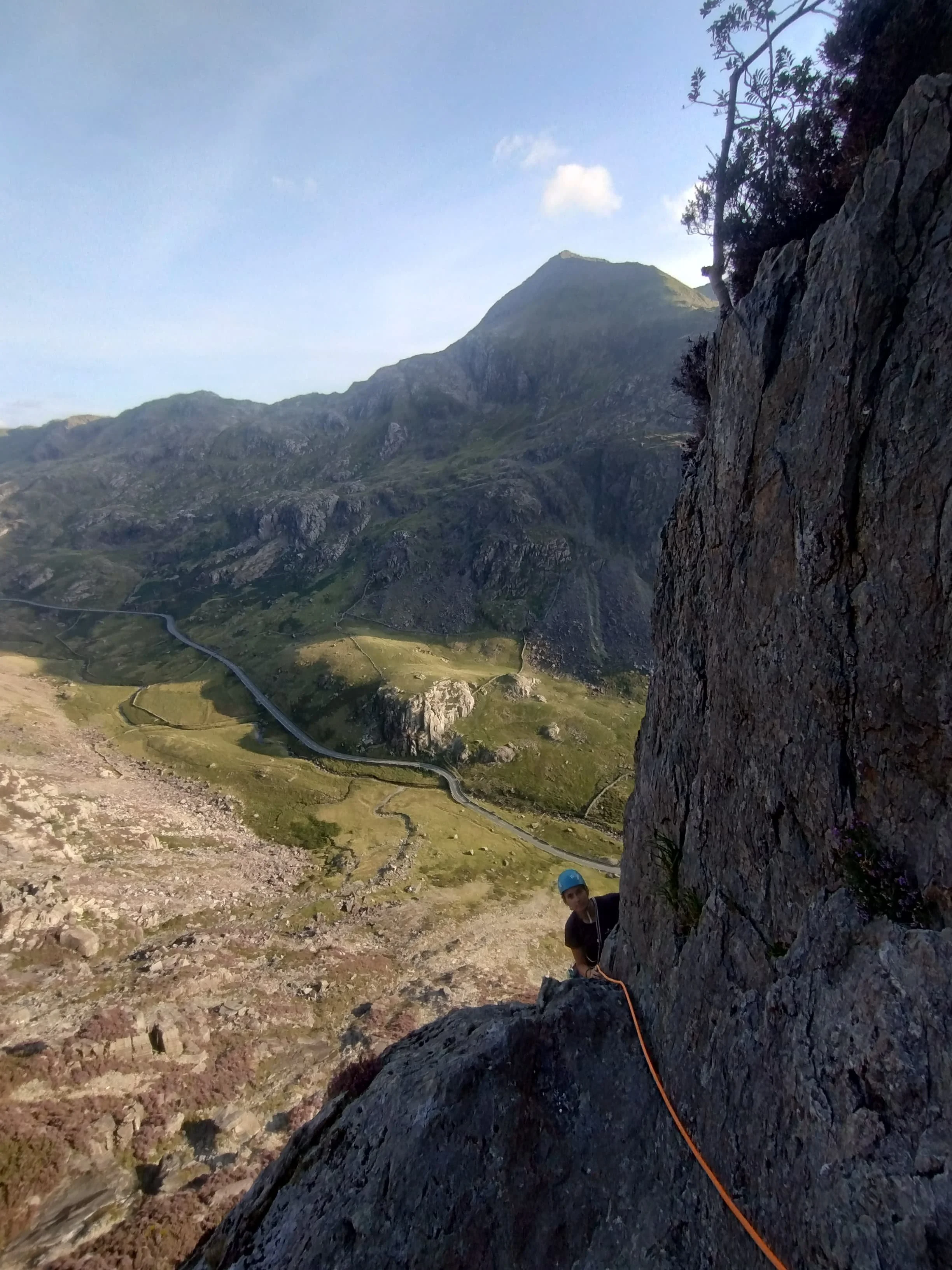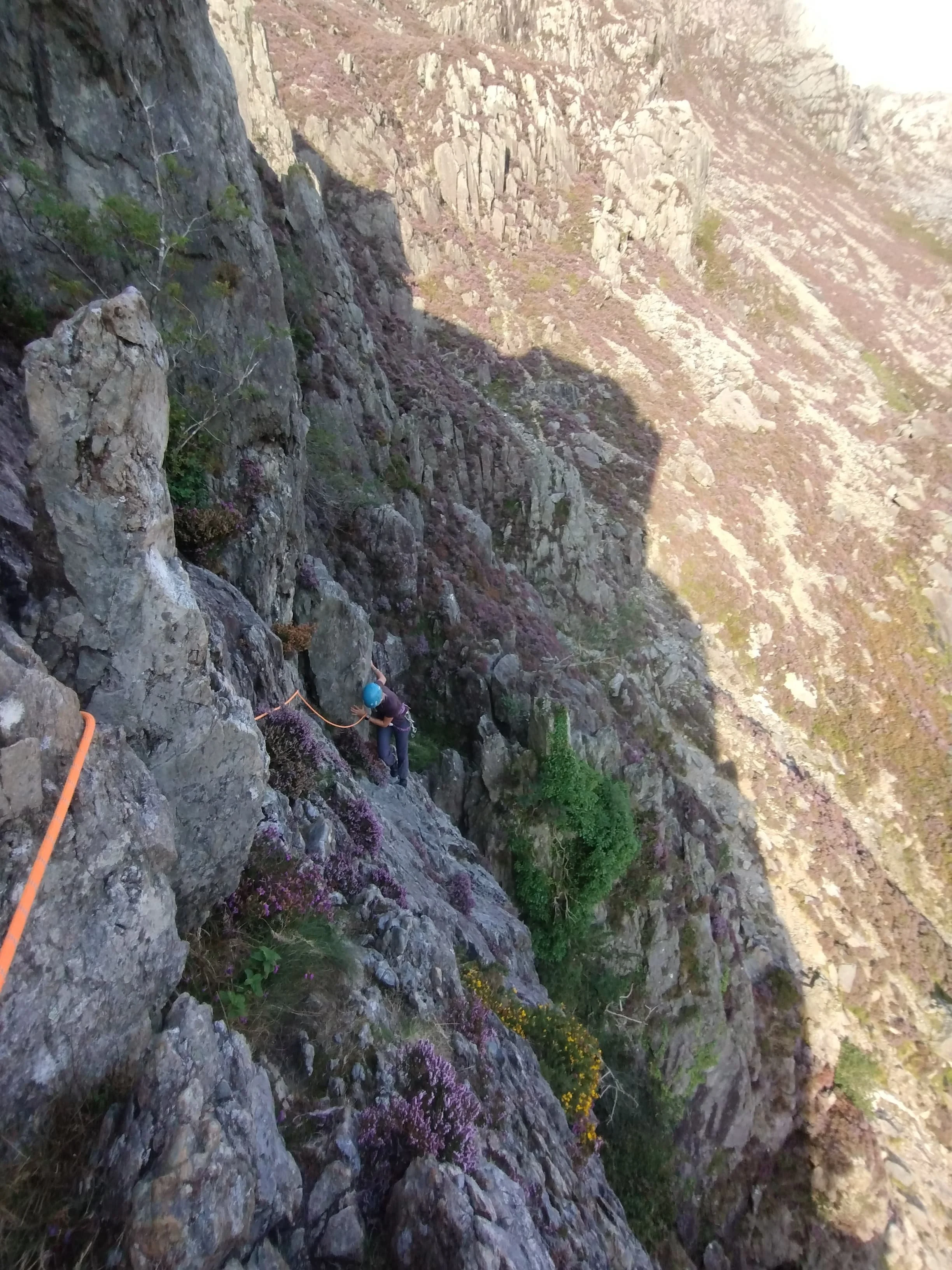My Favourite V- DIFF in North Wales
Flying Buttress: A Classic Climb That Never Gets Old
High on the flanks of Dinas y Gromlech, overlooking the winding Llanberis Pass, Flying Buttress (VDiff) is one of North Wales' most-loved trad climbs — and for good reason.
Tucked on the right-hand edge of the East Wing, it’s an obvious and inviting line: chimney systems, short walls, slabs and flakes that stack neatly above one another into five-ish pitches of brilliant, steady climbing. Depending on how confident you are, you can link sections together or keep it broken into more manageable lengths — either way, it flows naturally.
I’ve climbed Flying Buttress more times than I can count — with clients, friends, alone on long summer evenings or drizzly mornings. And I still love it. There’s something about the rhythm of the movement and the position above the Pass that makes it hard to beat. It’s a reliable go-to that never feels like a filler.
Round the corner before the final pitch.
Getting There
Dinas y Gromlech sits right in the heart of the Llanberis Pass (Eryri/Snowdonia), just above the famous Cromlech boulders on the roadside.
On a quiet day, you can park in one of the lay-bys near the base of the crag — either directly below the boulders or just up the road. Spaces are limited and fill up fast, especially on weekends or bank holidays, so it’s worth getting there early.
If you're visiting during a busy spell, consider parking in Llanberis and taking the Sherpa’r Wyddfa bus up the Pass. It’s cheap, regular, and a great way to reduce traffic in one of the busiest areas of the park. Plus, you avoid the stress of trying to wedge into a lay-by on a blind corner.
The walk-in is short and sharp — expect 15–25 minutes of uphill scrambling over boulders and faint trails. You’ll arrive breathless but rewarded, with the whole Pass laid out below you.
The Climbing
The route itself starts on a buttress just right of the classic routes such as Right wall, Left wall and Cemetery gates. It follows a logical line of weaknesses through the rock: short chimneys, flakes, slabs, and grooves. There are some polished footholds here and there — a result of decades of eager traffic — but the climbing is so juggy and featured that it hardly matters. It still feels positive and secure, especially for those building confidence on trad.
It’s a route that encourages movement. There’s always something to aim for, and the gear placements are frequent and solid, with options for comfortable stances in all the right places. That being said, there is the occasional loose hold here and there despite the thousands of ascents.
And then there’s the position — it’s not an alpine epic, but you feel high above the valley floor. The sounds of the road drift up as a background hum while you’re tucked into a timeless slice of Welsh climbing history.
The traverse pitch; Beautifully exposed but straight forward climbing.
Climb It Alone, or Link It Up
On its own, Flying Buttress is a brilliant route and depending on your skill level and speed you may be hungry for more. For a fuller day at the same grade I’d always recommend linking it with Spiral Stairs (another VDiff classic starting on the main walls just left of Left wall. Both climbs are ideal for newer trad leaders or experienced climbers looking for a mellow, exposed day in the hills. They’re accessible, well-protected, and packed with character.
They also make a great teaching pair — chimney skills, anchor building, rope management on multi-pitch terrain — all in a setting that’s inspiring but not intimidating.
Final Thoughts
Flying Buttress is the kind of route that stays with you. It’s not about the grade or the moves — it’s about the feel of it. The history, the flow, the view, the company you’re with. Whether it’s your first time or your fiftieth, it’s the kind of climb that gives back every time you tie in.



